Grace Kelly

Actress • Royal
Birth Date: November 12, 1929
Death Date: September 14, 1982 — 52 years old
Birth Place: Philadelphia, Pennsylvania
In the storied history of the American cinema, few stars shone so brightly for so briefly as Grace Kelly. A working actor for just five short years in the 1950s, known best for her roles as sparkling, whimsical socialites and her work in multiple Alfred Hitchcock thrillers, Kelly outwardly came to embody her name with a seemingly effortless elegance and an almost pristine aesthetic, even as behind the scenes she became notorious for her serial conquests of her leading men and other luminaries. Her talents rivaled her beauty, winning her a best actress Oscar playing against type and her own aristocratic pedigree in "The Country Girl" in 1954.
But at the height of her career, Kelly cemented an idyllic legacy by bowing out of Hollywood to marry into European royalty, becoming an American fairy tale incarnate, "Princess Grace."
Kelly's storybook ascent to a princess's life did not quite involve a rags-to-riches story. Born in Philadelphia, PA on Nov. 12, 1929, Grace Patricia Kelly came up in the rarified air of Philly high society. Her father, Jack Kelly, a three-time Olympic gold medal-winner in rowing, built his modest trade as a bricklayer into a successful construction company that did work up and down the Atlantic corridor. He leveraged his success and notoriety into politics, getting elected as city councilman, running unsuccessfully for mayor of Philadelphia, and, as he maintained his athletic zeal through most his life, later being appointed National Director of Physical Fitness by President Franklin Roosevelt.
Kelly's health-inclined lifestyle made him a seemingly ideal fit with his wife, Margaret, a handsome, outgoing Germanic woman. She held a degree in physical education and went on to become the first woman to coach the University of Pennsylvania's women's swim team, and later, the first director of its physical education department.
Kelly idolized her father, but, for the often sickly, clumsy child, winning the approval of such a man would prove daunting, especially with sister Peggy, the oldest, brightest and most graceful, as well as athletic older brother Kell absorbing much of Jack Kelly's considerable, disciplinarian dotage. With the arrival of baby sister Lizanne, the future star became the most solitary and detached of the Kelly clan, escaping into realms of imagination with her dolls and developing a friendship with her bohemian, "black sheep" uncle, Pulitzer Prize-winning playwright, George Kelly.
She grew up "competing for love," she would later recall, and it was not just with her siblings; Her varied biographers concur, that her father took conspicuous advantage of his own pseudo-celebrity to engage in numerous, barely-secreted extracurricular dalliances. Young Grace's penchant for make-believe further developed in school pageants, and after attending a performance by a local theater troupe, the Old Academy Players, she announced to Jack that she wanted to act.
This did not sit well in her father's proper nouveau riche world, where "show folk" were looked down upon, but he grudgingly allowed her to join the theater. She made her first professional stage appearance at age 12 in a play called "Don't Feed the Animals," remembering the experience as "nice to feel an audience respond." As she flowered from gawky girl into a stunning teen, Grace Kelly had finally found a source of the validation she did not receive in the Kelly household.
But where she veered into the unseemly world of the arts, Kelly would dutifully adhere to Jack's ethos in another way: amorous liaisons. The Kelly patriarch would not brook the "wrong type" for his daughters, and made no bones about vetoing relationships. He did just this when Grace's first boyfriend, Harper Davis, graduated high school in 1944 and joined the Navy. Jack looked down on the boy because his family was Protestant and his father a mere Buick dealer, insisting his daughter end the relationship before Davis was shipping-off-to-war.
After dumping Davis, per her father's encouragement, she settled into a dating pattern more characterized by volume and whimsy; not unlike his sexual proclivities. Her dichotomous path of pseudo-rebellion and pursuit of paternal approbation would continue upon her own graduation in 1947.
Rejected by prestigious Bennington College for her sub-par grades, her uncle George's good name got her an audition and acceptance at the American Academy of Dramatic Arts in New York - to her father's chagrin. In ensuing years, she honed her craft and image, putting emphatic work into the refined, Anglicized accent that would be the hallmark of her later screen personae; became a prolific model for print advertising; and began a series of romances with older, high-profile men.
Among them were French movie actor Alex D'arcy, the Shah Reza Pahlavi of Iran (whose marriage proposal she turned down) and up-and-coming Broadway director Don Richardson, also one of Kelly's teachers. The ongoing Richardson relationship, however, outraged her parents, as he was still married (though in the process of securing a divorce) and - more unforgivable in the Kellys' elite circles - he was Jewish. Jack Kelly, Richardson said later, would go so far as to attempt to bribe him into ending the relationship, and, when that did not work, Richardson received threatening calls from brother Kell.
Kelly made her Broadway debut in 1949 in August Strindberg's "The Father," and while she received favorable notices, it became clear she lacked the booming projection required for live stage performances.
The young medium of television, however, proved less demanding. Kelly became a regular in the many live teleplays the networks aired in their early days, appearing on 60 broadcasts between 1950 and 1953, in addition to building her theater bona fides with summer stock productions.
In the meantime, her agent had secured her an audition with Stanley Kramer for his upcoming western, the now-classic "High Noon" (1951). As a relative unknown in Hollywood, Kelly's price was right for Kramer's limited budget, and after her stoic presence in the interview, director Fred Zinnemann decided she would be perfect for the role of repressed, pacifist wife of Gary Cooper's world-weary marshal.
She would castigate herself for her own performance for years after, but, according to biographer Wendy Leigh, the experience was highlighted by the first of what would become a pattern for her - a quiet affair with her leading man, the 50-year-old Cooper. Leigh also alleged Kelly engaged in a concurrent romance with Zinnemann.
The pattern would manifest on her very next film project, with another venerable movie great. She renewed her studies, now with New York drama guru Sanford Meisner, but "High Noon" became a hit, winning Cooper a Best Actor Oscar and netting more Hollywood attentions, including that of directorial legend John Ford.
Ford was then casting the Africa-set adventure "Mogambo" (1953), a remake of "Red Dust" (1932), starring Clark Gable and Ava Gardner. Signing onto the project, Kelly became an MGM contract player, earning $30,000 a year, with accessions to her demands that she could still live in New York, do no more than three films a year, and continue her stage work. For the movie, the studio granted her third billing after its own stars, Gable and Gardner.
Shooting in Kenya, Kelly learned Swahili, quickly fell into a relationship with Gable - 28 years her senior and four times married and divorced (once widowed) - and mirrored her screen role, a repressed and proper young woman awakened to the world by the majesty and danger of Africa and by the roguish Gable. At the end of the shoot, the actors went to London, where they discovered the media already abuzz over their short-lived romance. Kelly had become tabloid-fodder, on top of which, "Mogambo" would earn her an Oscar nomination for Best Supporting Actress. It also earned her a call from Alfred Hitchcock.
Hitchcock, notorious for the prim but ravishing Nordic female leads in his sometimes dark, sometimes quirky thrillers, gave Kelly the lead in "Dial M for Murder" (1954), the first of their three films together.
Playing the target of her scheming husband's (Ray Milland) intricate murder plot, she went from demure to somewhat risqué violence on-screen, effecting Hitchcock's vision of a "snow-covered volcano" for the role. Off-screen, she erupted in another way. Her own prim, sometimes icy demeanor belied a series of sexual conquests of principals on the film, including co-star Tony Dawson, writer Frederick Knott and, as one might expect, Milland. "She f*cked everyone!" Hitchcock later told screenwriter Bryan Mawr. The affair with Milland - again, a much older man - became the most serious, in more ways than one.
It threatened to boil into a scandal, given that his bride of 30 years had enjoyed her status as one of the most popular Hollywood wives in the city. Kelly later insisted that Milland had misrepresented the marriage as troubled. While bedroom canoodling may have been as rampant in 1950s Tinseltown as today, the studio system abhorred public scandals as threats to box-office receipts, and, to avoid a potentially permanent blot on her burgeoning career, as soon as shooting finished on "Dial M," Kelly returned to New York City.
Now an undeniable star, she next found herself facing a choice between Elia Kazan's gritty drama "On the Waterfront" (1954) opposite Marlon Brando or Hitchcock's "Rear Window" (1954). She chose to advance the growing paternal working relationship with Hitchcock, though, famously, Eva Marie Saint would win the Academy Award for the role Kelly passed on.
Playing opposite Jimmy Stewart, Kelly fell into the role naturally, sparkling as the playful, affectionate and snoopy socialite Lisa Fremont, slumming as the girlfriend of Stewart's temporarily wheelchair-bound police photographer. The dazzlingly designed Hitchcock classic would be a showcase of Kelly's beauty and her true personality. "Her gift did not lie in impersonating other people," said one biographer. "Her talent was to impersonate her fantasy of herself. She had sensed how Lisa Fremont was her own dream . . . It was the direction in which Grace was pushing her own life, mustering the bouncy self-assurance she needed to buoy her very needy inner child . . ."
Well before the film's summer 1954 release, buzz developed around the rough-cuts, prompting Billy Wilkerson, editor of The Hollywood Reporter to rave, "It won't be long before this attractive kid will be the Number One Box Office attraction in the world." Just months before the "Rear Window" premiere, the prestigious LIFE magazine featured Kelly as its cover story.
Kelly wrapped 1953 in a relatively unceremonious stint, playing William Holden's wife in "The Bridges of Toko-Ri" (1954). Not surprisingly, during the process she fell in love with the married Holden (who similarly drew Jack Kelly's cold wrath upon an ill-advised visit).
The movie, however, would prove a stepping stone to Grace's Academy Award, as its producer-director team of William Perlberg and George Seaton were even then plotting their next project, a film version of Clifford Odets' Broadway hit "The Country Girl." They had originally cast Jennifer Jones in the title role, but when she became pregnant, they immediately settled on Kelly. After a flare-up with MGM over her "loan-outs" to other studios, Paramount paid MGM $50,000 for her time and she went to work, again with Holden, playing a bleak, frumpy woman mired in the despair of a failing marriage to a besotted, depressed, washed-up crooner.
Holden played a director of a Broadway play, who falls for Kelly's character after casting her husband, in turn played by 50-year-old, depressed (sometimes besotted) crooner Bing Crosby - an uncomfortable love triangle that eerily mirrored real life. Crosby, whose own unhappy marriage had ended when his wife died of cancer (and who infamously shunned her for her last months of life), fell for the 24-year-old Kelly, and Holden - now seeking a diplomatic way out of his own relationship with Kelly - graciously bowed out. Crosby publicly courted her and they became an "it" couple for a time, but in the end, she turned down his marriage proposal.
After the forgettable MGM outing "Green Fire" (1954), Kelly sought another loan-out to Paramount to work again with Hitchcock.
In "To Catch a Thief" (1955), she also returned to her showcase character type; a flirty, devil-may-care debutant playing with intrigue, this time with Cary Grant as her on-screen love interest. Off-screen, during filming in the south of France, she entertained the overtures of a new brand of suitor, the 41-year-old fashion designer and international playboy, Oleg Cassini. Before the end of the shoot in the idyllic setting, Cassini, enraptured as so many before, casually broached marriage and Kelly accepted.
But they returned to the U.S. to find Kelly's star going nova, as Life and The Hollywood Reporter had predicted, and their relationship already the subject of professional gossipmongers. That did not sit well with Jack and Margaret Kelly, who similarly considered Cassini beneath their pedigree and, when they met, went out of their way to alienate him. The Kellys' humiliating treatment and their daughter's tacit servility to them gave Cassini ominous pause about the future would-be marriage. Journalist John Glatt later suggested Kelly may have been pregnant by Cassini but, in the wake of the imbroglio with her family, had an abortion.
At the end of 1954, "The Country Girl" opened to critical raves, and The New York Drama Critics Circle gave Kelly even more ammunition in her renewed contract dust-up with MGM, naming her their "Best Actress of 1954." It would prove a harbinger of big things to come, and not just professionally.
The next March, Kelly beat out Judy Garland, Jane Wyman, Audrey Hepburn and Dorothy Dandridge for the Academy Award for Best Actress for "The Country Girl." She had asked Cassini to beg off attendance for appearances' sake and later intimated she went home alone with her Oscar - though on biography suggested a more ribald after-party, with the Best Actor winner Brando slipping her his phone number during the post-event photo op and winding up in bed with her only a few hours later. According to the Kelly biography, Crosby, hoping to rekindle things, actually walked in on the couple in flagrante delicto.
If that seemed an awkward celebration to the evening, Jack Kelly's backhanded response to the news may have topped it. "Of my four children," he told reporters, "she was the last one I'd expected to support me in my old age." But the accolade also led her to join the American delegation to the Cannes Film Festival, where in a famous photo op in the royal palace of the tiny, nearby principality of Monaco, she met its 31-year-old sovereign, Prince Rainier III. While the trip saw Kelly strike up a new relationship with France's foremost actor, Jean-Pierre Aumont, she also began a secret courtship of letters with the prince upon her return to the U.S.
Her next movie, "The Swan" (1956), would prove strangely prophetic, as it had when Kelly had starred in a teleplay version of it on CBS in 1950. In it, she plays the well-born scion who must choose between being true to herself or marrying a disinterested prince for the good of her country and family. In December 1955, Prince Rainier made a celebrated trip to the U.S., reputedly on the hunt for a princess, and while both had officially denied anything between them, his path led to the Kelly family's door in Philadelphia. After a courtly visit, he proposed.
Not surprisingly
Credits

Hollywood Princesses: Grace & Meghan

alpha-retro

Frank Sinatra:In Concert At The Royal Festival Hall

ORF III - Spezial

Oscar Fashion Stars

Callas Asolluta

Wedding in Monaco

The Nativity

The Children of Theatre Street

Weekend of a Champion

The Poppy Is Also a Flower

The SwanStream
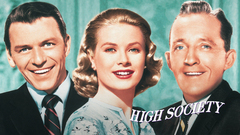
High SocietyStream
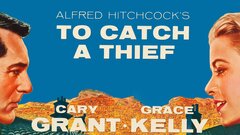
To Catch a ThiefStream

The Bridges at Toko-Ri
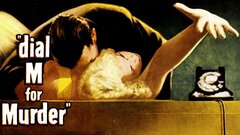
Dial M for MurderStream
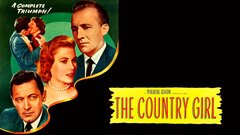
The Country GirlStream
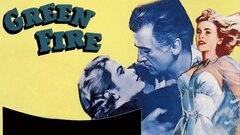
Green FireStream

L'Émeraude tragique
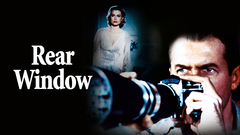
Rear WindowStream
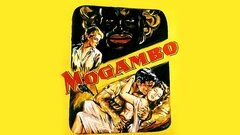
MogamboStream

The Kill
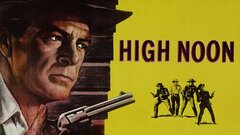
High NoonStream
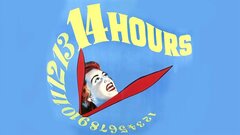
Fourteen Hours

The Rockingham Tea Set
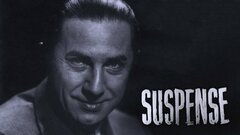
SuspenseStream

Studio One























































































































































































































